One night back in August of 2013, I was on my way to one of my preferred Mexican restaurants for some takeout pico de gallo and homemade chips to enhance movie night. I detoured through a residential area to avoid a feckless snail on the main road. In so doing, I saw what appeared to be a late-’70s or early-’80s Celica.
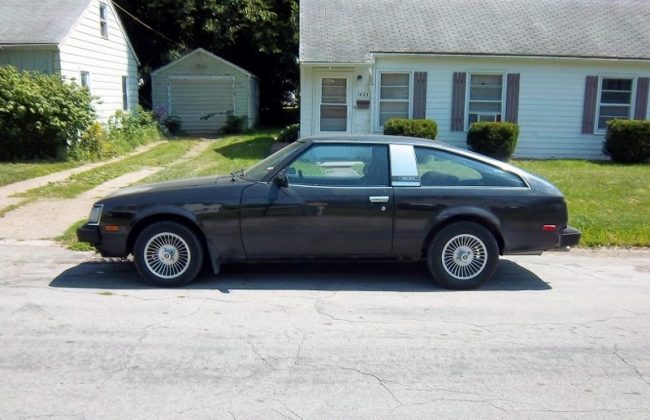
Wow. That’s not something you see in the Midwest these days. Those early Japanese cars may have had robust engines, but rustproofing was, shall we say, not ideal? At any rate, most ’70s and early ’80s Toyotas, Datsuns and Hondas were either gone or seriously Swiss-cheesed here by the late ’80s and early ’90s.
Of course, as it was dark, there was to be no picture taking, but I made a mental note to return, and did so, later that week.

The all-new 1978 Celica replaced the Mini-Me Mustang variant after ’77. It was also the first Toyota designed at the new Calty design studio in California. The look was now smooth and modern, but lacked many of the cool JDM-style detail fillips of its predecessor.
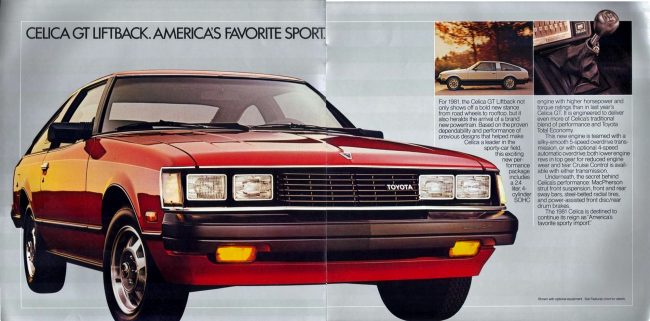
Early models had quad round headlamps, but a modest 1981 facelift brought quad rectangular headlamps, parking lamps and a more square-rigged grille, thus pegging our alloy-wheeled, fog-lamped example as an ’80 or ’81 model.
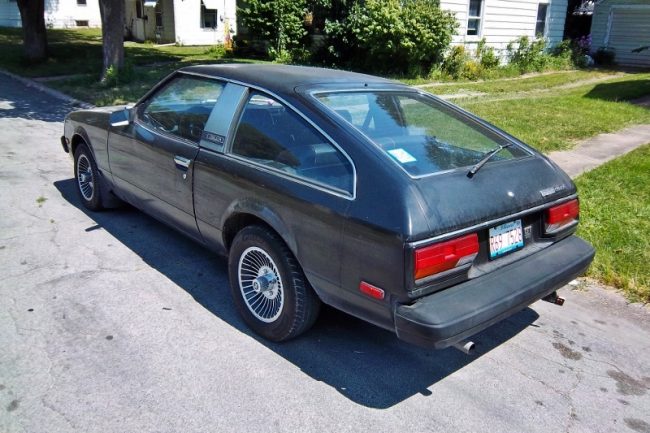
I was struck by how nice this car is; most such Celicas had dissolved before 1990 or so. Nor did it appear to have been restored, meaning it either came from out West or was a babied and garaged toy for most of its life. GTs like this one were powered by the 2.0-liter “20R” inline four-cylinder engine.
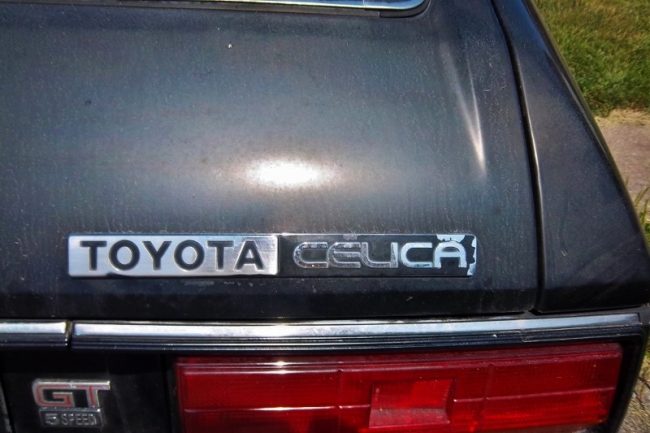
This one, as is displayed prominently on the rear panel, also has a five-speed. As far as sporting 1980 Toyotas were concerned, this would have been the one to have, if not the similar-but-pricier six-cylinder Supra.
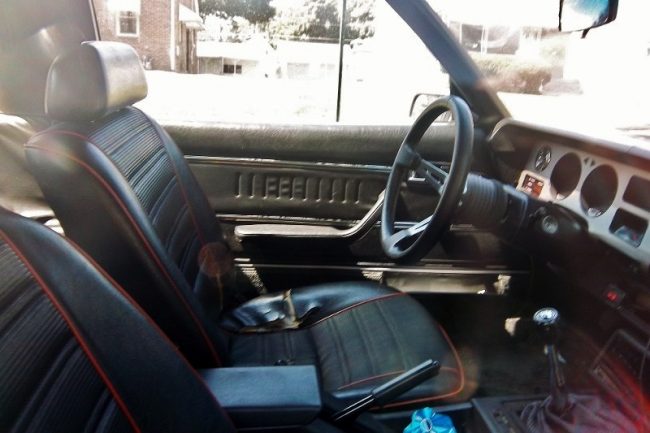
Well, that’s really all I can say about these. You know my preferences run to various and sundry gigantic Lincolns, Cadillacs and Chrysler New Yorkers, ha ha.

I think they’re cool, but I have no direct experience with them other than seeing a tobacco-brown one parked across the street from our house in the late 1980s. I was, however, quite surprised to see this one in town–it’s been close to 25 years since I last saw one in the metal–not to mention seeing one in such nice shape!
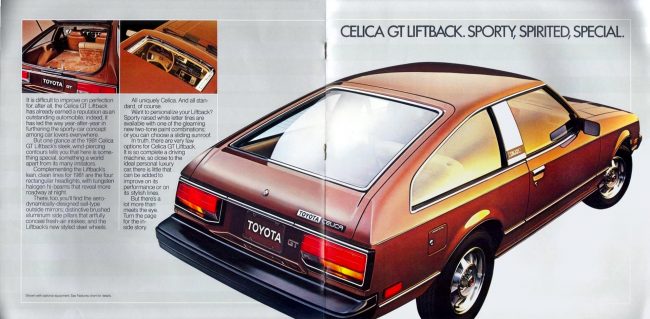
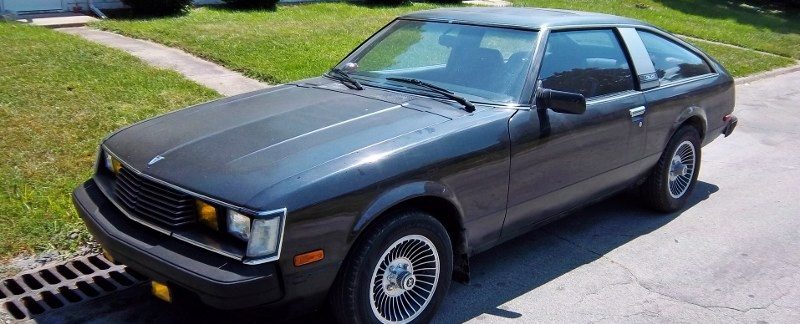

Thank you for your good article. Yep, If you keep the rust away and are somewhat kind to the plastic and fabric… then you can drive these “beasts of burden” for many years with minimal, simple repairs.
I have a hard time imagine what kind of person was driving these in Japan. I know by the 1990s there were young adolescent Japanese doing drifting street racing but who were the first owners of this generation and the one before of Celica. Young career girls, early career salarymen? The changes made for this generation, the American design studio and adding the six make it pretty clear the car was meant specifically for America. I agree with Tom the first showed some inspiration by Mustang. Just another predatory no heritage car coming for hard currency.
The car mags would often have a paragraph in their tests why you might be nervous about buying a car from this or that maker because,.. insert some BS about quality or whatever when they just mean their not cool. They sure never explained what game these folks were playing.
Some years more than 90% of Austin Healey 3000 production was exported because of the UK’s desire to get their hands on US dollars. Those cars made as much sense in England as U.S. District Judge John Bates’ decisions on DACA. Resources were allocated to British industry based on each company’s ability to export in order for the country to get its hands on US wealth. Those predatory leeches in Blighty were still trying to fight the revolutionary war!
This predatory product was an effort by the Japanese to make cars that an important market wanted to buy. GM and Ford should have been doing the same thing, instead of producing cars so badly that some thought they were intentionally punishing small car buyers. Isn’t it great how the Japanese built cars and SUVs that suited how Americans use their cars instead of sticking us with awful ‘World Car’ products like the garbage Ganzhou Motors and the Ford Foundation are coughing up with their dying breaths?
It appears that John may live in Georgia. His hatred of the Japanese is more clear to me, it’s the kudzu. Otherwise, we could say the same about the original Corvette or Mustang- no heritage car(s) coming for hard currency. But giving the market what they wanted. Celica may have been the same.
Japan loves Georgia. In an inadvertent good counterpoint to the non racial argument I made above they named the few domestic versions of one of their sports cars after my city then and now. They misspelled it but we all fall short of the Glory, even me. Subconsciously I must have been touched, it is the only Japanese car I have owned made by the fine folks of Hiroshima. I am afraid it left me with a hatred I freely admit for semi trailing arms. I am no speed demon but in that car I always seemed to be going sideways.
The RX7 could be rather skittish.
Kudzu is a bitch.
I don’t think that the British were ever accused of predatory pricing or dumping of their cars on the US market. Very few AH 3000’s competed with little than other Corvettes or Thunderbirds. The British were trying to pull in money from all parts of the world to re-supply their treasury after WWII. That the sporting cars were rather popular was a bonus for them, but a very narrow market to compete in.
You’re sort of right, because such accusations only came out of the mouths of jingoists. Corvettes came out in 1953. How many Austin-Healeys sold without taking sales from Chevrolet? Toyotas and Hondas weren’t direct competitors with GM or Ford either, because they were SO MUCH BETTER than the UAW-3 were that the Detroit brands were irrelevant. The only limiting factor when they showed up was supply.
Yet somehow in that Valhalla of only supply constrained Japanese cars, Mazda got so hollowed out that they no longer have the ability to put together a four cylinder only car’s manual transmission. The one part of at least a small car that I would argue our Japanese friends had a real talent for.
Nobody drove these in Japan, these were meant to compete with Mustangs. You don’t need to be so defensive, Toyota didn’t win this one, the Mustang was always a better car, and has consistently been one of the best quality American cars. Japan isn’t good at everything.
“Japan isn’t good at everything” Hush, don’t tell CJ, you will make him cry and then when he composes himself he will call you names.
When I was in high school (in the mid-late 80’s) I had a friend whose parents each owned one of these, I think. I only remember that at least one of them was rear wheel drive and my friend crashed one up pretty badly when he took off from a stop sign, hit a patch of wet leaves (it was fall in Chicago area) and spun into a tree.
Sadly that’s all I can remember about the it as I wasn’t much of a car guy back then.
A friend had a slightly newer version with sunroof, leather, power seats and windows, and inflatable lumbar support bladder. We road tripped it to Key West from Atlanta. Very nice except it had been an Ohio car and was starting to rot at 4 or so years old.
That hefty B-pillar looks to be more of a stylistic excess than structural necessity. It’s the only thing I dislike about the car.
The 20R is a 2.2L engine not a 2.0L as mentioned above (the previous gen 18R is a 2.0L and the later gen 22R is a 2.4L). That number associated with the Toyota R series engines doesn’t come from its displacement, it is the engine generation. This generation engine is actually more durable than the 22R which came later because it uses a dual row timing chain instead of a single row. High millage examples don’t break their plastic timing chain guides like they do on the later versions.
There are still a fair number of these running around the pacific northwest, but far fewer than there were a decade ago. Our lack of road salt mostly keeps the rust at bay for far longer. This particular generation of Celica can still die of the rust due to a failure of the door window seals. Once those go the rain can pool inside the doors in a couple of spots and rust them from the inside out.
Always loved the rear wheel drive Celicas, but this version is my least favorite. It always looked pudgy to me and was notably slower than the cars that came before or after. The generation before it looks like a 7/8 scale Mustang. The generation after it has a very ’80s straight line look.
I really didn’t like Toyotas when these were new. Not that I’d driven a car on pavement more than twice, but I knew what I liked. My respect for Toyotas had to be earned against a predisposition to think of them as uninspiring looking cars from Japan. I’d had enough Japanese motorcycles fail under me by then to not assume there was any inherent superiority to their products, although I’d also spent time around such wonders as Bultacos that wouldn’t ever start. By the end of the ’80s, I realized that Hondas and Toyotas were incredibly tough cars, but they still weren’t for me. I thought I was some connoisseur of West German cars by then. I considered this Celica and its Mazda 626 coupe contemporary to be mini-pickup trucks dressed as 3-series BMW competitors, although they admittedly had better interiors than anything from Detroit.
When I was in college, the Celicas were still all over the place. I have a friend with questionable morals. I believe he was paying his own way in school, provided you don’t consider the methods he acquired his funding. He had a worn key that fit worn ignitions in several year old Toyotas. Many a second generation Celica was among the cars he boosted while wasted, although I don’t know for a fact that he sold any of them. They just used to appear in inappropriate places on Saturday and Sunday mornings after nights when he boasted, ‘I think I’ll go steal a car!’ He’s a successful aspiring-Lizard today. Like one of the other two liberal males from my peer group, he has a trans-kid. So far I’ve resisted the urge to point out that none of the ten or so conservative men that are part of our crew have kids who have allowed their teachers to coach them onto hormone blockers.
The styling of these Celicas showed remarkable restraint, at least when not in ‘black gold’ Supra trim. Their replacement had full-on-Tokyo-by-night-style surface-excitement. I suppose it is because they didn’t sell well enough at home. Appreciating how much new car buyers loved their 1980 Celicas is probably down to whether or not you ever owned a Monza, Skyhawk, Mustang II, Mustang Cobra Turbo, or Capri with the I6. There was a day when starting every time and being nicely assembled was enough.
Was never really a fan of the Corolla up until the generation after this one. In my high school years I was a wannabe auto stylist, learning all of the different idioms and following all of the different trends through car magazines. I remember the buzz when these cars were released and I thought to myself: this thing looks like a dumpy Ferrari Daytona. I know GM stylists used the Daytona as the inspiration for the H-body replacements for the Vega; the fastback roof line with the over-sized B-pillar. Like Picasso said, “Good artists copy, great artists steal…”, at least that was one thing GM did right with those cars.
Dammit! Celica! Not Corolla.
I’ve raced a 78 model year all over the Midwest. Great handling car, and durable with the stick axle and an ecotec driving the rear wheels. Car owner had a JDM Celica Supra sail panel that looked great.